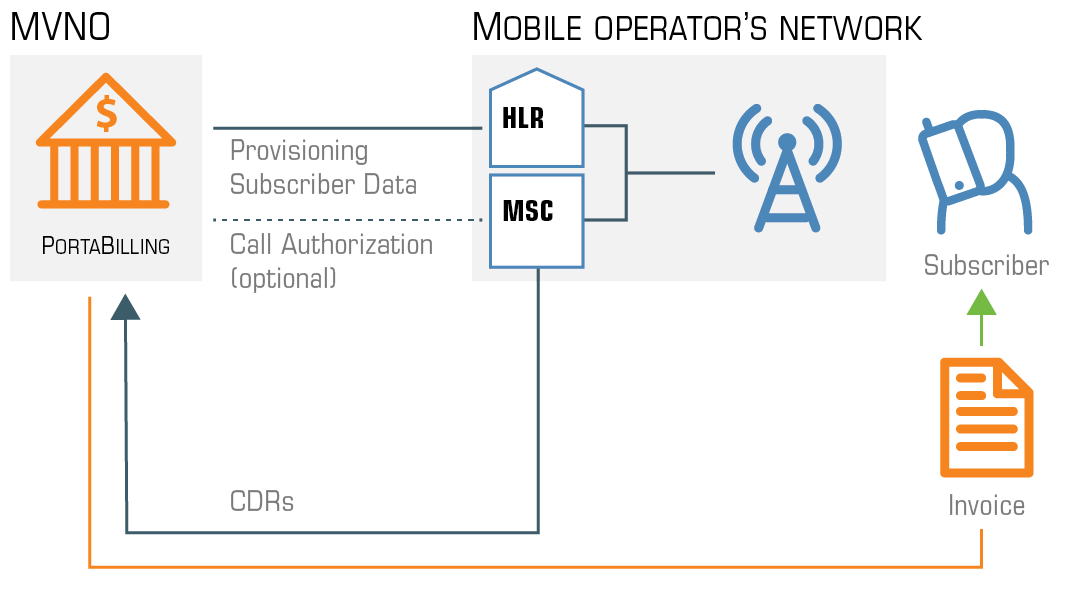To penetrate the mobile services market, there is no need to purchase expensive hardware, build your own tower network, or (in some cases) even get a license from the regulatory authorities. As a Mobile Virtual Network Operator (MVNO), you can utilize an existing mobile network to sell your products and bill your customers directly. PortaBilling serves as the BSS and OCS for such an MVNO.
Service providers can choose between two MVNO models: one with or one without real-time authorization and rating.
In the MVNO model with real-time authorization and rating, PortaBilling interacts with the mobile operator’s MSC or SAE-GW (depending on the type of hosting mobile network) as described above.
In the MVNO model without real-time authorization and rating, the mobile operator that hosts the MVNO will need to receive information about accounts and their status and deliver information about completed calls to the MVNO. Thus, there are two major aspects of the interaction between the MVNO’s billing and provisioning core (PortaBilling) and that of the hosting mobile operator’s network:
Account management
When an account/customer is created by the MVNO, it should be provisioned to the HLR (Home Location Register) of the host mobile operator’s system. Account blocking/unblocking, deletion, and so on should also be mapped to the mobile operator.
This is achieved by using External System Provisioning Framework (ESPF) event mapping. When a change event occurs in PortaBilling (e.g., creation of a new account, product change, or suspension of a customer due to non-payment), it is queued and an integration plug-in is invoked. The application code inside the plug-in then delivers the information to the mobile operator’s network using the required protocol (e.g., text files or XML API calls) and communication method.
Call data retrieval and processing
To process call data for an MVNO’s customers, the mobile operator periodically delivers files to the MVNO containing the CDRs for all calls made by the MVNO’s customers during a certain time interval. On the PortaBilling side, a regular xDR import is then performed.
Billing customers and sending out invoices is done directly by PortaBilling, without involving the host mobile operator.



